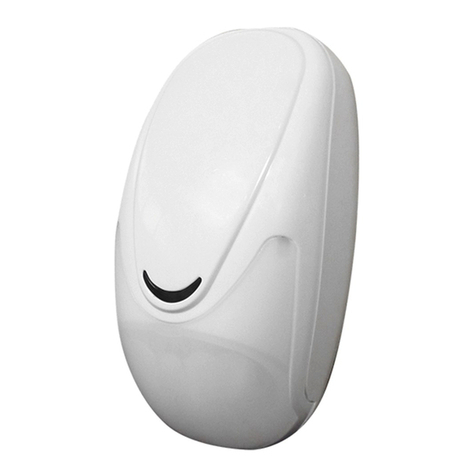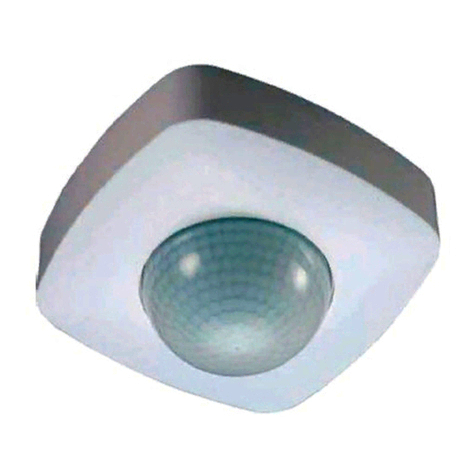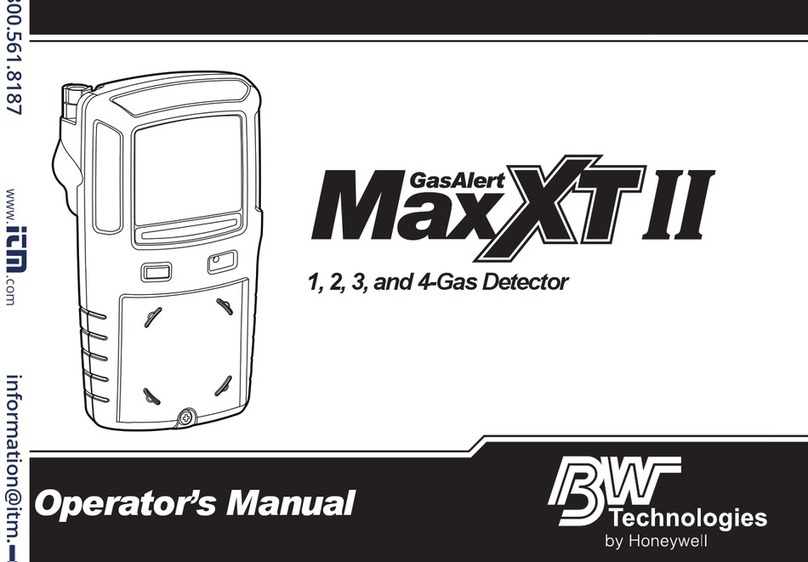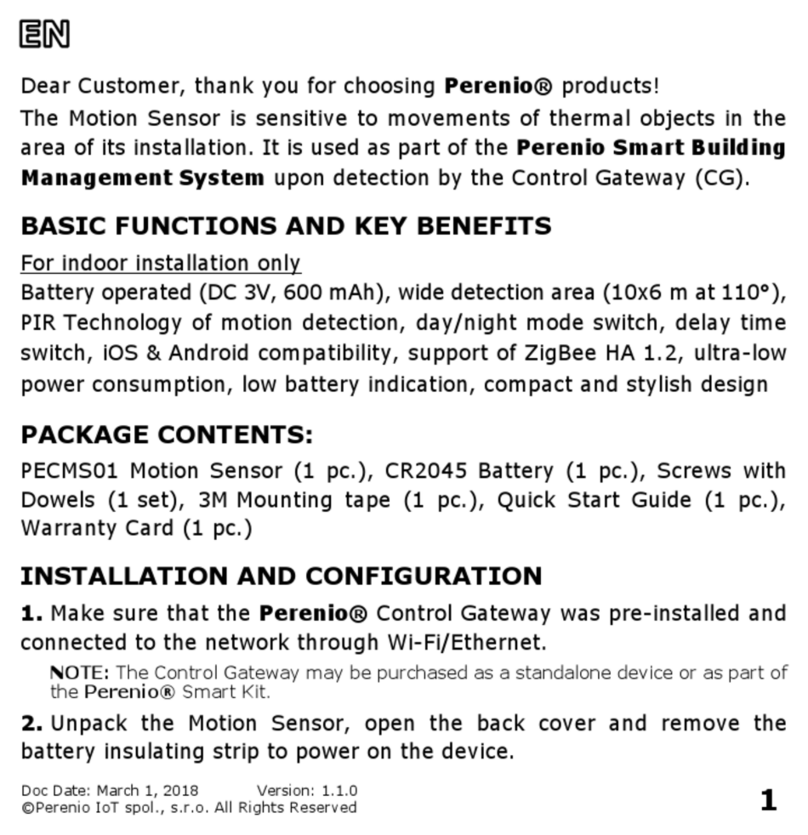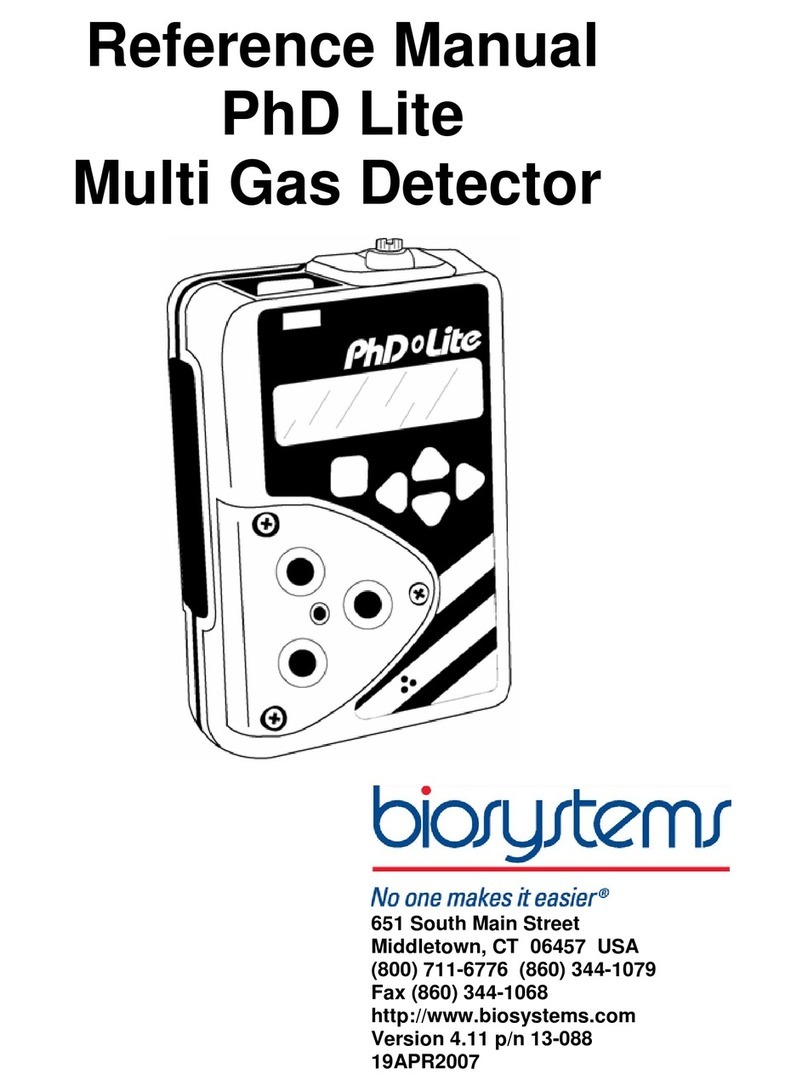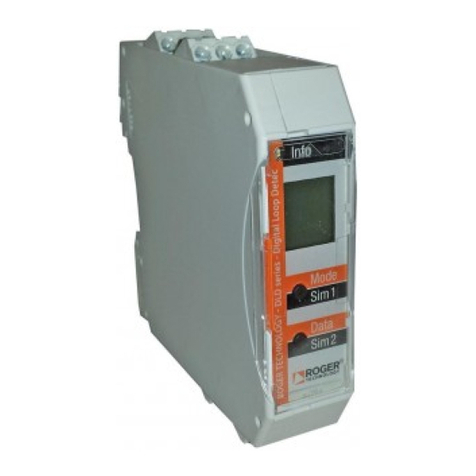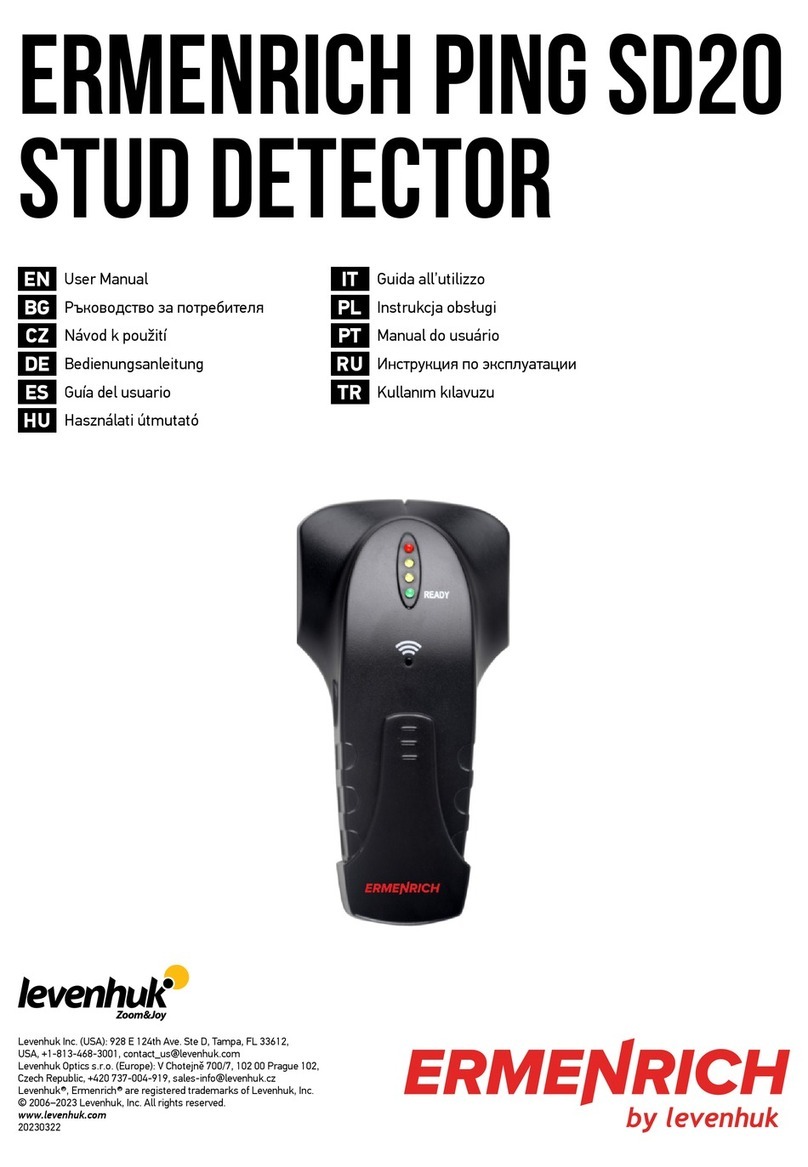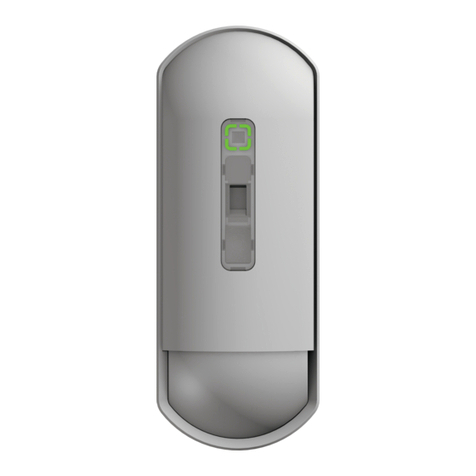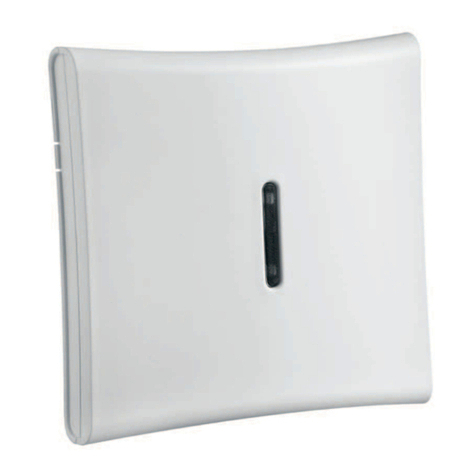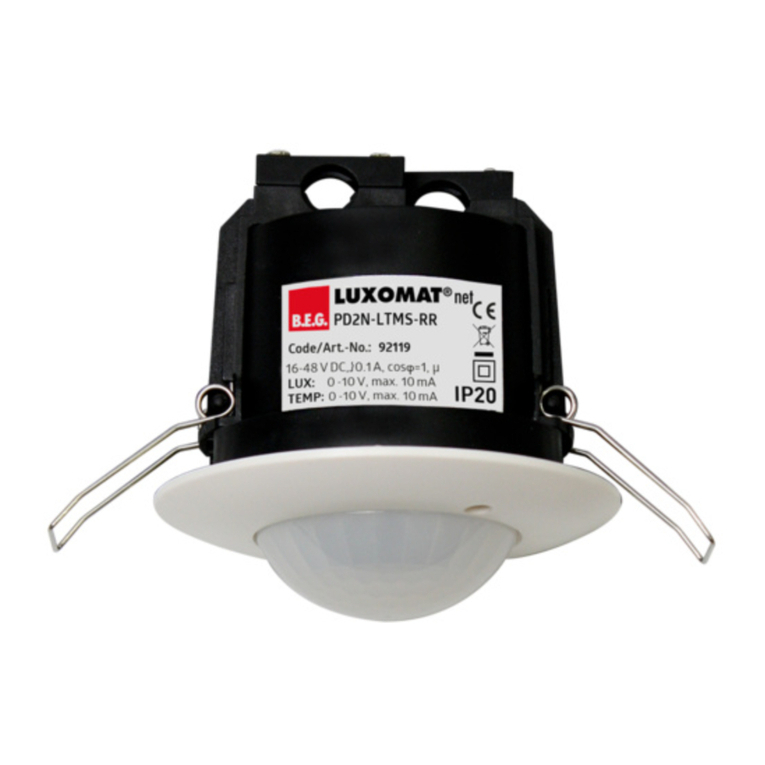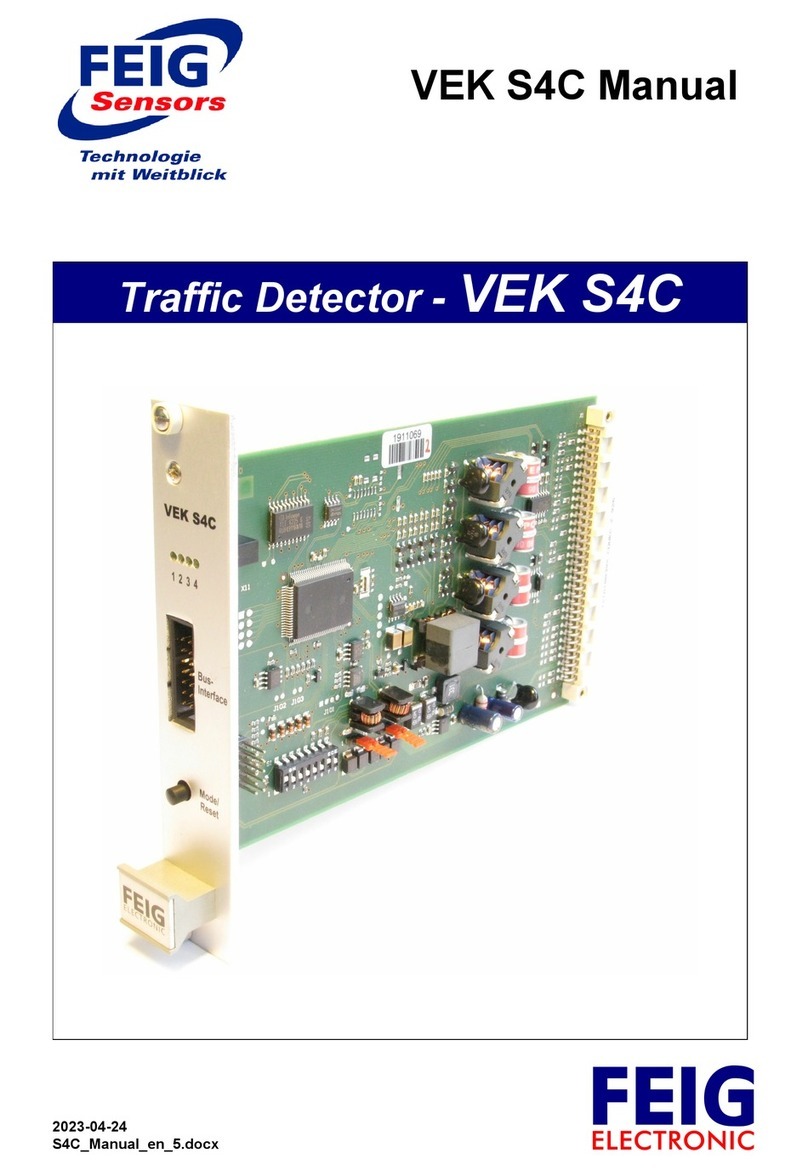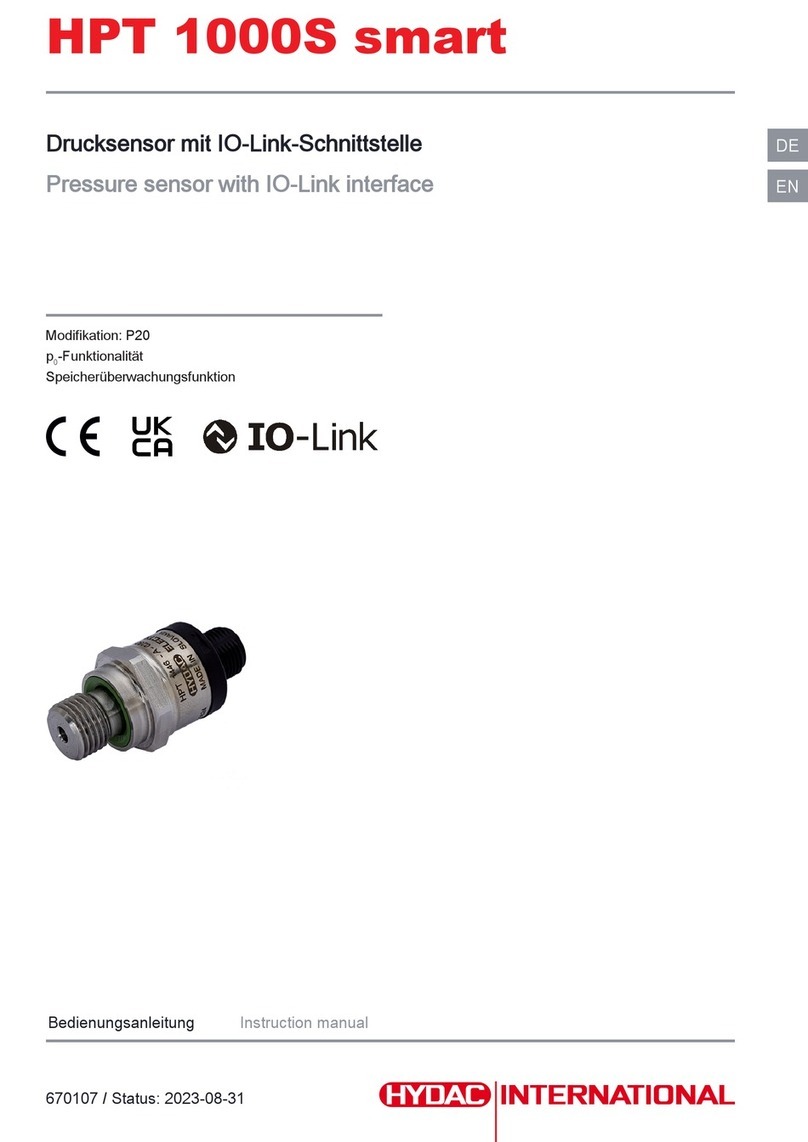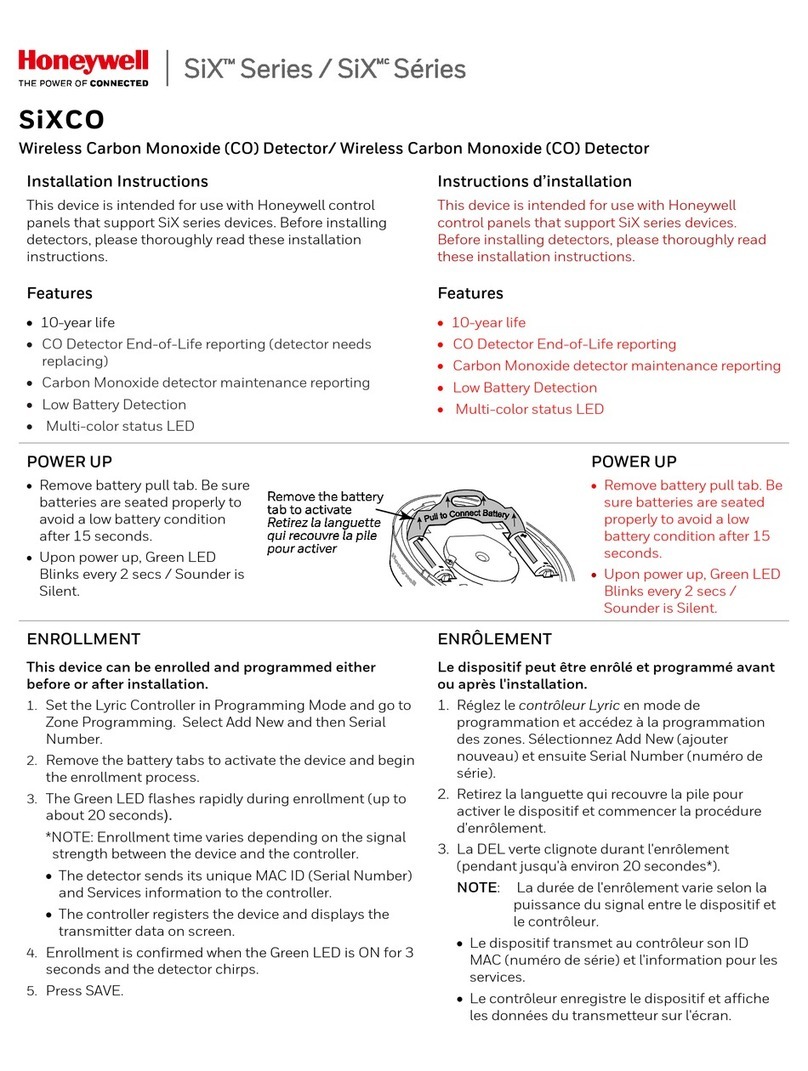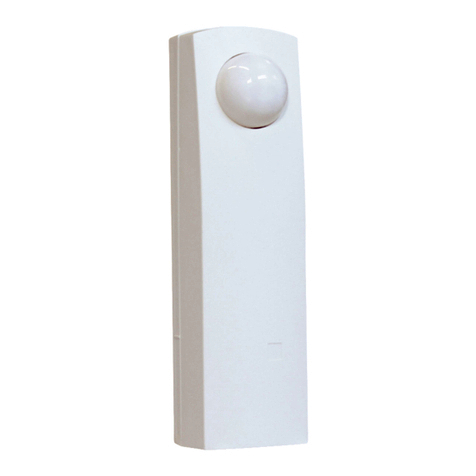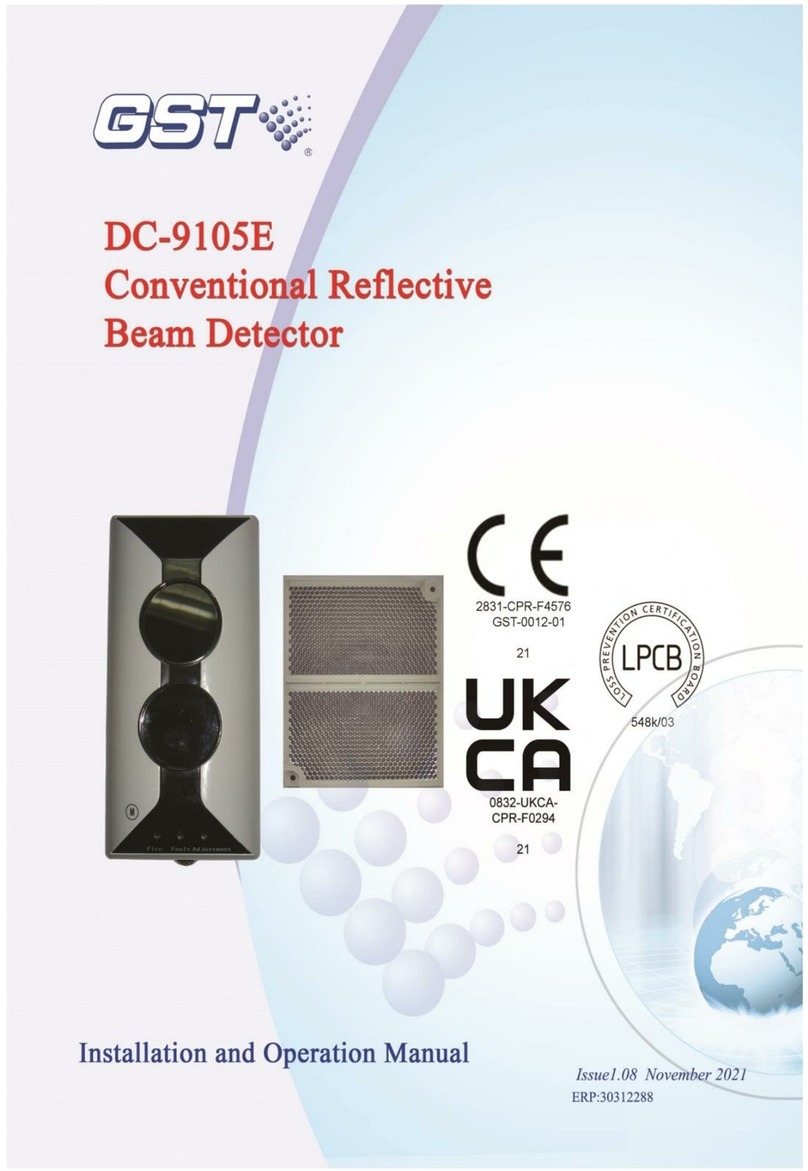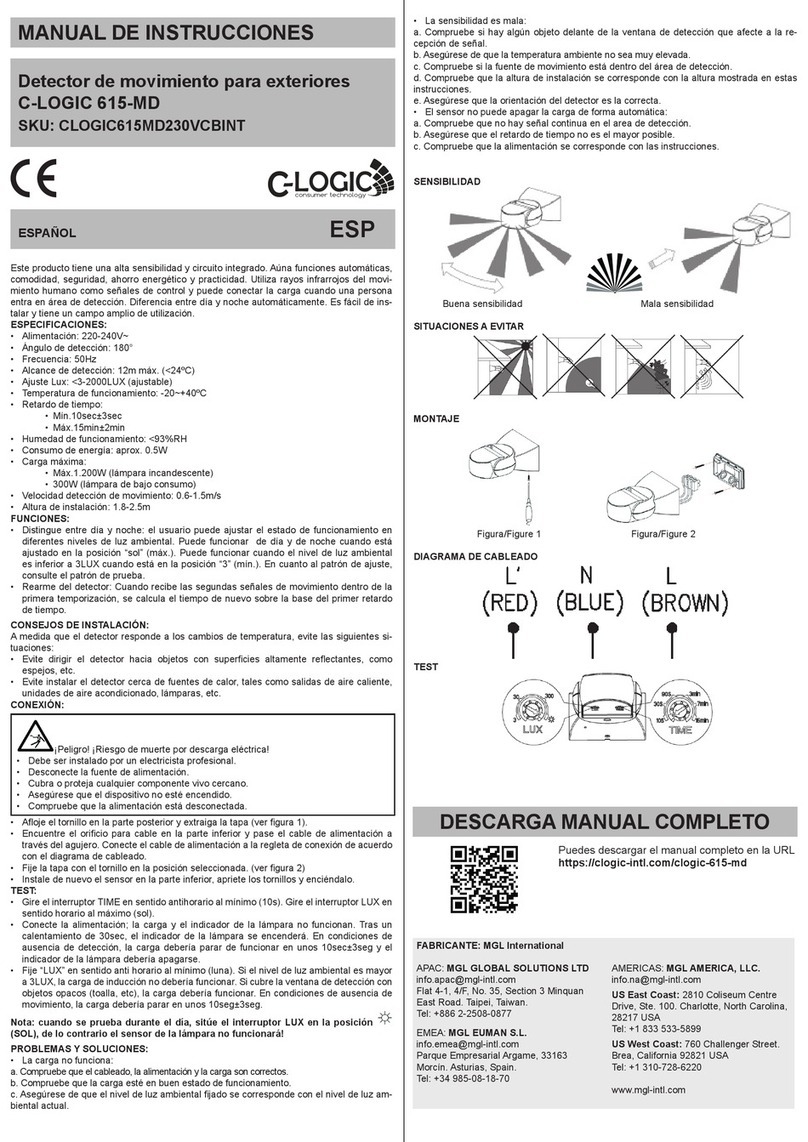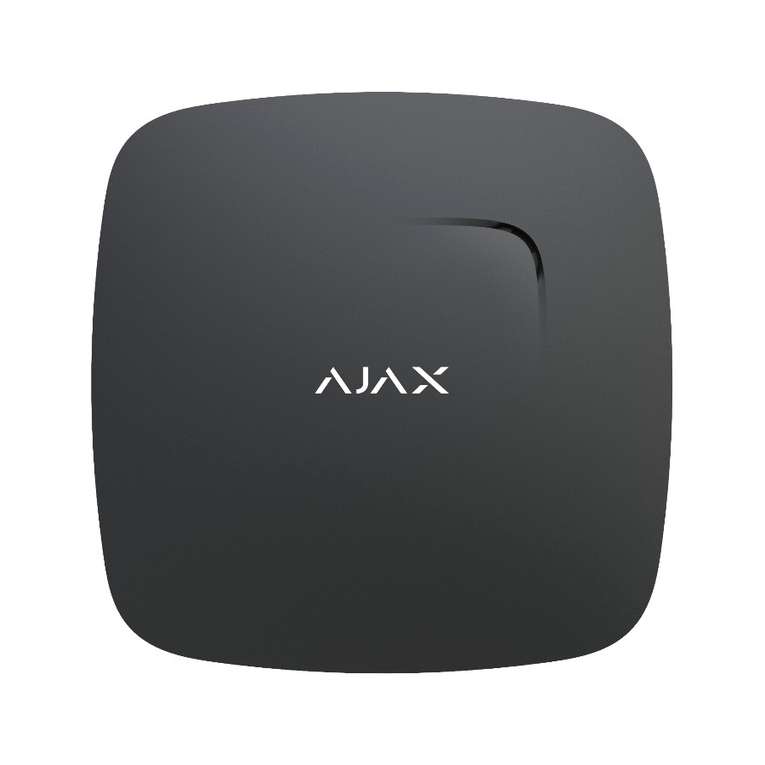Styx StX S1 Product manual

StX S1
Cosmic Ray
Neutron Detector
Technical
Reference Manual

Notice
This document contains proprietary information of the StyX Neutronica GmbH. StyX Neutronica
provides the information and data included in this document for your benefit, but it is not possible
to entirely verify and test all information, in all circumstances, particularly information relating to
non-StyX-Neutronica manufactured products. StyX Neutronica makes neither warranty nor represents
relating to the quality, content, or adequacy of this information. The information in this document is
subject to change without notice. Although every effort has been made to ensure the accuracy of this
manual, StyX Neutronica shall not be liable for any errors, incidental, or consequential damages in
connection with the furnishing, performance, or use of this manual or examples herein. StyX Neutronica
assumes no responsibility for damage or loss resulting from the use of this manual, for loss or claims
by third parties, which may arise through the use of Reference Manual or for any damage as a result
of malfunction or repair.
January 27, 2023
StyX Neutronica GmbH
Cecil-Taylor-Ring 12-18, 68309 Mannheim
Germany
Copyright ©2022 Styx Neutronica GmbH, all rights reserved.

Contents
1 General setup and functions 1
1.1 Safety instructions ........................................ 1
1.2 StX S1 Components ....................................... 2
2 Operation 5
2.1 Installation and start-up ..................................... 5
2.1.1 Setup ........................................... 5
2.1.2 Sensor start ....................................... 5
2.1.3 Sensor operation ..................................... 6
2.1.4 Service and transport .................................. 8
2.2 Software configuration ...................................... 8
2.3 Logger data ............................................ 12
Appendix 14
A Technical specifications ..................................... 14
i

ii

Part 1
General setup and functions
1.1 Safety instructions
•
Do not modify the electronics of AC-powered devices. Before starting the instrument ensure
hardware integrity.
•
The product is a high voltage device. In operation the amplifier, the cables and connectors to the
proportional counter tubes can carry high voltages above 1000 V. Also when switched off, due to
built-in capacities high electrostatic voltages can occur. As there are no electric currents above
0.01 mA there is no direct danger to the human body. Yet, by improper handling damages can
be inflicted to other electronic devices. Please contact the manufacturer in case of uncertainties
regarding the handling.
•
Contrary to other proportional counter tubes, this device does not contain any dangerous gases.
•
The logger casing (IP 66) and the sensor are protected against splash water. Intrusion of water
can damage the electronics. Please keep all parts of the instrument closed during operation.
•
The supply voltage of the logger should be 12 V and can be in the range 9–24 V. The I
2
C
communication with external devices operates at 3.3 V levels.
•The sensor can be operated at temperatures of -20 ◦C to 45 ◦C.
1

1.2 StX S1 Components
Figure 1.1: The full detection sys-
tem.
The model series StX S1 consists of the components:
- a base unit with the neutron detector,
- amplifier and digitizer (nCatcher) ,
- a logger,
- additional sensors for environmental variables
- a mounting pod
- PV panel and battery for independent operation
The following connectivity features are offered:
- multi-level display to check the detector state,
- UART interface for serial communication, detector settings and data
transfer,
- I2C interface for data transmission,
- GSM/LTE/NB-IoT data transfer.
In the displayed configuration the detector StX S1, PV Panel and
environmental sensors are mounted on a single pole.
Detector Base Unit
The main component of the Cosmic Ray Neutron Detector is the base
unit. It consists of a HDPE casing with a thickness of 2.4 cm and the
dimensions of 146 cm
×∅
18 cm. It contains one tube with a length of
125 cm, which contains a coated copper foil as a converter and Ar:CO
2
as a counting gas.
nCatcher
The single-channel amplifier is used to read out neutron pulses from
the counting tube. It is operated by an ATmega328P microcontroller
and is connected by a CAT6 RJ45cable of up to 3 m to the logger
for the CRP models or up to 20 m for the CRPX nCatcher models.
It communicates via a 5 V I
2
C interface. The amplifier records all
signals above a given threshold and measures pulse height and pulse
length with a millisecond timestamp. These events are recorded in a
buffer, which allows for an independent operation of the nCatcher for
approximately one minute, depending on the rate.
Logger
The logger acts as the central control unit of the sensor. It collects
data from the neutron counters as well as a number additional sensors
for environmental variables. The data is stored on an SD Card and optionally transmitted via GSM. It
also supplies the attached sensors with 3.3 V, 5 V and 12 V. The logger is located in the logger casing
which also houses the battery as well as the charge controller.
The main processor of the logger is a SAM3X8E ARM Cortex-M3 CPU. It features
2

•onboard environmental sensors for temperature, air pressure and relative humidity,
•a temperature-stabilized real time clock,
•a status display,
•an SD card slot for FAT/FAT32 formatted cards up to 4 GB.
•
RJ45 (ethernet) connectors for I
2
C for environmental sensors, I
2
C for nCatcher units, differential
I2C for nCatcher units, serial lines for external GPS units,
•an SDI-12 connector for environmental sensors,
•(optionally) an internal 2G, 3G, 4G or NB-IoT modem for telemetry.
Logger, nCatcher and sensors can be operated asynchronously as the logger uses several buffers to
store volatile data. Fig. 1.2 shows the main components of the data flow. One or more nCatcher units
record pulses from counting tubes. These are stored in an internal ring buffer and are transmitted
upon request to the logger. The logger likewise uses a ring buffer to store events before storing them
to the SD card or transmitting them to a data receiver or modem.
Event
Buffer
[64]
new
Event Event
Buffer
[512]
2
I C
Store/Send
Buffer
GPS V
RTC Temp
Hum
Pres
GSM
SD
UART
nCatcher(s) Central Unit
tube(s)
read write
write
write
send
Figure 1.2: Data structure for the sensor DAQ.
3

Figure 1.3: Logger front side with 12 V-in, on/off switch, display switch, SD card slot, display and USB
connector.
Figure 1.4: Logger back side with SIM card slot, SDI-12 connector, GSM antenna connector, RJ45 connectors
for external devices including cosmic-ray detectors and GPS antenna.
4

Part 2
Operation
2.1 Installation and start-up
2.1.1 Setup
See the detailed description in the manual ’Cosmic Ray Detector - Mounting Instructions’.
2.1.2 Sensor start
•
Switch on the device by setting the main power switch to the ’On’ position. The status display
shows the StyX Neutronica logo.
•The logger checks whether there is an SD card inserted.
–
If yes, it checks the existence of a correct configuration file
central.cfg
with the correct
revision in the root folder and whether the configuration file should be used. In case not
default settings are loaded.
•
the logger settings are adjusted according to the parameters set by the configuration and the
amplifiers are set regarding high voltage levels and thresholds.
•the logger scans for environmental sensors.
•
the logger checks the real time clock (RTC). In case of support battery failure the RTC is set to
a standard date and can update itself via GPS.
•in case a GSM module is used, it is activated and its bootup involves the following steps
–initializing of the modem: reset and restart,
–check for a SIM card
–check for signal availability (this requires an external antenna),
–connecting to the access point of the provider,
–check for signal quality.
If any of these steps fail the modem is shut off.
5

On the status display the sensor start procedure iterates through the following panels:
Step 1 Step 2 Step 3 Step 4
Step 5a 6a Step 5b Step 6b
Independently from the logger boot process the nCatcher is initialized with the following steps:
•the microcontroller initializes the internal and external I2C bus,
•
in case successful the connection to nCatcher channel 0 (
0x08
) or channel 1 (
0x09
) is displayed,
•hardware thresholds are adjusted,
•the high voltage (HV) is set.
The values for high voltage and threshold are stored in the internal non-volatile memory (EEPROM).
During the bootup process of the nCatcher these settings are loaded primarily. After that they can
be adjusted by the logger.
2.1.3 Sensor operation
On the status display after booting the following information are presented:
Main Panel - Events Main Panel - count rate
The uppermost two rows show the current logger temperature and relative humidity. The panel
switches in the lowest row between event information and count rate. Both numbers in the event
view are pulse height and pulse length of the last raw data obtained from the nCatcher unit. These
numbers should approximately lie in the range 100
. . .
400. Series of too high or too low values in-
dicate sensor malfunction. The count rate is calculated every 10 s and starts at a value of 0.0. As
the nCatcher operates independently from the logger, it already starts recording events before the
bootup process of the logger is finished. For this reason the first count rate value can be overestimated.
The logger operates in cycles of 1 s in normal mode and 10 s or more in the low-power mode. The
duration of one cycle is not fixed. It can be extended by various operations like a data transfer. The
system time is however obtained from a real time clock and therefore provides a correct measurement
of time. The cycle unit is used for an indirect measurement for adjusting intervals, such as
•
the number of cycles for averaging values of environmental sensors before storing them to the
SD card.
6

•the number of cycles for averaging GPS values before storing them to the SD card.
•the number of cycles for recording neutron data before saving histograms to the SD card.
Due to the low bus speed SDI-12 sensors are not read out every cycle but once every averaging interval.
The status display can be switched through several panels
Panel 2 Panel 3 Panel 4 Panel 5
Panel 6 Panel 7 Panel 8 Panel 9
Panel 10 Panel 11 Panel 12 Panel 13
Panel 14 Panel 15
•
GPS: in case a GPS is attached, configured and has a ’fix’, its position information is reported
•recorded events in the current period for both nCatcher channels
•
external temperature (T) and relative humidity (RH), either retrieved from an I
2
C or SDI-12
sensor. The default pressure (P) value is taken from the sensor inside the logger.
•
GSM: modem configuration. In case the modem is attached to an operator, the signal quality is
displayed (6 = bad, 30 = excellent)
•time and date of the real time clock
•pulse height spectrum of the nCatcher
•pulse length spectrum of the nCatcher
•
time series of the last 126 hours with minimum (top left) and maximum (top right) values of the
neutron count rate (N), pressure (P), temperature (T) and relative humidity (H)
•battery voltage and internal cycle counter
•nCatcher temperature (T) and relative humidity (RH)
•nCatcher high voltage (HV) and high voltage current monitor values
7

2.1.4 Service and transport
The sensor can be transported by means of usual spring-suspended transport devices. For transporta-
tion an anti-shock mat is recommended. Dropping down a tube on a hard surface from heights more
than 10 cm can lead to damages.
2.2 Software configuration
The configuration file
central.cfg
in the main folder of the SD card contains the following settings
1
:
1 // use this config file [bool]
FZJT // sensor name [string]
900 // averaging cycles environmental sensors [int]
1 // use data averaging (else 1s intervals) [bool]
1 // averaging cycles GPS [int]
0 // GPS shutoff time before reactivation in s [int]
3600 // averaging cycles for neutron count spectra [int]
0 // GPS log save to SD [bool]
1 // environmental sensors log save to SD [bool]
1 // raw data log save to SD [bool]
1 // use display [bool]
0 // enable serial output [bool]
750 // general nCatcher high voltage in V [int]
0 // use individual nCatcher voltages [bool]
1150 1151 1152 1153 1154 1155 1156 1157 // individual nCatcher voltage settings
in V [int]
5600 // general nCatcher hardware threshold in a.u. [int]
0 // use individual nCatcher hardware thresholds [bool]
5600 5601 5602 5603 5604 5605 5606 5607 // individual nCatcher threshold
settings in a.u. [int]
1 // use software threshold (data reduction) [bool]
40 // lower pulse height threshold in DAC values [int]
450 // upper pulse height threshold in DAC values [int]
110 // lower pulse length threshold in DAC values [int]
300 // upper pulse length threshold in DAC values [int]
236 // add high precision data selection [bool]
0 // SDI-12 sensor configuration [int]
0 // use ATMOS sensor [bool]
0 // modem configuration mode [int]
1 // autoreset on I2C-failure [bool]
1 // autoreset if inactive [bool]
0 // send data over 2nd I2C [bool]
3 // address for slave 2nd I2C [int]
0 // GSM APN [string]
0 // GSM user [string]
0 // GSM password [string]
0 // use MQTT [currently inactive]
0 // MQTT broker [string]
0 // MQTT userID [string]
0 // MQTT user name [string]
0 // MQTT password [string]
0 // FTP server address [string]
1The first entry contains the value, it is followed by a tabulator and an annotation and the variable type in brackets.
8

0 // FTP server user name [string]
0 // FTP server password [string]
0 // FTP file path [string]
0 // use ftp file upload [bool]
1 // ftp transmission mode [1=passive, 0=active]
iot.1nce.net // PDP context [string]
10.64.81.69 // UDP server address [string]
61556 // UDP server port [int]
26201 // BC95 operator ID [int]
8 // BC95 band number [int]
2 // BC95 registration ID [int]
119 // address for BME sensor [int]
8 // nCatcher address (single) [int]
1 // save file numbering in intervals, numbers ascending [bool]
3600 // save and send file every x seconds [int]
1 // wait for server UDP handshake [bool]
0 // low power mode [int]
0 // baud rate [int]
78400 // auto-reboot every x seconds [int]
2 3 0 4 // SDI-12 addresses [int]
4 // nCatcher version [int]
\t // output separator char [char]
7 // configuration version [int]
The variables of the configuration file can acquire the following data types:
•bool: binary value, 0 equals ’off’, ’not used’ or ’no’, 1 equals ’on’ or ’yes’.
•int: integer value.
•string/char: text, setting to 0 disables the field or enforces default values.
In order to use the configuration file, the first line must contain a ’1’, otherwise default values will be
loaded, which only allow for a basic functionality. Annotations to the system configuration:
•averaging cycles environmental sensors
: The logger operates in loop cycles of
approximately 1 s. Within this cycle data is fetched from the attached sensors and modules.
The logger tries to keep the time for all operations within one cycle within 1 s. It can, however,
exceed this time frame in case of certain input/output operations. The real time for n cycles
might therefore be slightly longer than n seconds.
•GPS shutoff time
: In case an Ublox GPS module is used (not Sim7600) the GPS can be
shut off for most of the time in order to save battery life.
•log to SD
: Disables data logging to the SD card, secondarily data transmission via GSM is
also inhibited.
•use display
: Activates or deactivates the display. Setting to -1 rotates the display by 180
degrees.
•enable serial output
: activates serial output via USB. It provides detailed information
during bootup and runtime. Setting this value to ’5’ prints all AT commands to the modems and
the response. Setting this value to ’6’ prints only the AT modem response. Setting to 10+value
deactivates the serial output of nCatcher raw data.
•individual nCatcher voltages and thresholds: only for rover-type instruments.
9

•threshold
: The amplifier features a hardware threshold for setting a lower limit for signal
detection. It spans 4096 values. Setting the threshold in the range 1–4095 is a non-permanent
adjustment, the range 4096–8192 writes the value to the internal nCatcher EEPROM memory.
In that case this value is restored after a bootup or a power loss.
Additionally the logger can be configured for upper and lower software thresholds on neutron
signals in order to improve the signal quality. These values are not related to the the hardware
threshold settings as they refer to different quantities of a neutron pulse. Please refer to the
manufacturer for the optimal settings, which depend on the frontend electronics and the counter
tubes.
Recommended settings are provided in the example above.
•high precision model
: The logger can apply non-linear ’high precision’ models for ad-
ditional filtering. The 3-digit number denotes the selected mode and the decimal digits are
used to configure the model. For up to 2 tubes the setting ’236’ is recommended, referring to
high precision model 2 with a width of 36. For up to 5 tubes the setting ’11470’ or ’21508’ is
recommended.
•SDI-12: see below.
•modem configuration: see below.
•I2C
: The logger has two I
2
C interfaces. One used for communication with its periphery as
master, via the second interface the system can act as a slave. The bus is operated at 100 kHz.
As slave the data is transmitted as ASCII characters in packets of 32 Bytes.
•data reduction
: (deprecated) This option limits the amount of data stored per saving cycle.
However, in order to reduce the amount of data it is more convenient to increase the integration
intervals via averaging cycles.
•GSM
: In case providers require a user name and a password it can be set in this block. The
SIM card should not have a pin code, in case it has a pin code by default it is necessary to
put the card into a different device first and manually remove the SIM protection.
•MQTT: (currently inactive) Configuration for the MQTT interface.
•FTP
: configuration for the FTP data upload. Folder paths can either be added to the server
address or the file path. If ’use ftp file upload’ is set to 2 a timestamp is attached to the file
name instead of an ascending number.
•UDP/BC95: configuration for the NB-IoT data transmission via UDP.
•BME sensor: decimal I2C address of the external BME280 RhTP sensor.
•nCatcher address: decimal I2C address of the nCatcher.
•file numbering
: If set to 0 all data is written into one corresponding file. If set to 1,
ascending numbers will be used, increasing by one after each interval period. If set to 2, one
file will be generated each day with a timestamp YYMMDD.
•low power mode: logger is set to sleep for 9 s and operate for 1 s.
•baud rate
: baud rate for the serial communication of the logger via USB, default: 19200 baud.
•auto-reboot: logger restarts itself at the given interval.
•SDI-12 addresses
: SDI-12 addresses of 4 attached sensors. Set to -1 if not or default
values to be used.
•nCatcher version
: setting for the nCatcher generation used in the detector. 1 - nCatcher
with temperature sensor, 2 and 3 - nCatcher with humidity sensor, 4 - nCatcher with Watchdog.
10

•output separator char
: defines the separator character for console and file output. Avail-
able options are comma, colon, semicolon, tabulator (\t) or space (\s) .
•configuration version: The configuration version needs to match the one requested by
the firmware, otherwise the configuration file is not loaded.
The modem configuration mode can set
the following options (0 = nothing):
1. UbloxGPS
2. Sim800
3. Sim800 + UbloxGPS
4. Sim7600
5. Sim7600 GPS
6. Sim7600 + Sim7600 GPS
7. BC95-G
8. BC95-G + Sim7600 GPS
9. BC95-G + UbloxGPS
The SDI-12 configuration mode can set
the following options (0 = nothing):
1. rain gauge
2. PR2 profile probe
3. PM temperature sensor
4. PM pressure sensor
5. PM temperature and pressure sensor
6.
PM temperature and pressure sensor and
PR2 profile probe
10. ATMOS-41 weather station
11. rain gauge
12. PM temperature and pressure sensor
21. ATMOS-14 weather station
22. SMT-100 FDR sensors
23.
ATMOS-41 weather station and SMT-100
FDR sensors
24.
SMT-100 FDR sensors and PM temperature
and pressure sensor
For detailed information of specific settings please contact StyX Neutronica.
11

2.3 Logger data
The logger stores data in four tab-separated ASCII files:
•envlog.txt: information about environmental sensors.
•gpslog.txt: information from the GPS device.
•hvlog.txt: information from the nCatcher unit.
•cnt.txt: raw data from the neutron pulses.
•syslog.dat: System reporting messages.
The data structure is shown in the following with representative examples:
envlog:
Example:
31500 1614318789 12.19 24.33 101522.09 24.30 *0.0 0.0 0.233 02/26/2021 05:53:09
Format: cycle counter - Unix time stamp RTC (s since 1970) - Battery voltage [V] - internal temperature [
◦
C] -
internal pressure [Pa] - internal relative air humidity [%] - external temperature [
◦
C] - external pressure [Pa] -
external relative air humidity [%] - count rate [Hz] - time and date human readable
Date, time and Unix time stamp are redundant.
The number and type of values from * up to the count rate depends on the configuration of attached external sensors.
gpslog:
Example: 1540217657 49.4162 8.6735 120.0
Format: Unix time stamp RTC - latitude - longitude - height [m]
hvlog:
Example: 753 3 16.19 32.14 1.00750 1615568525 03/12/2021 17:02:06
Format: counter tube voltage [V] - counter tube current [mA] - nCatcher temperature [
◦
C] - nCatcher humidity [%]
- drift between oscillator and RTC - Unix time stamp RTC - time and date human readable
cnt:
Example: 14603900 249 181 14599548 1614301918 0
Format: nCatcher time stamp [ms] - pulse height [ADC] - pulse length [Clk] - logger time stamp [ms] - Unix time
stamp RTC - channel
The nCatcher time stamp is provided if an event exceeds the threshold, it is measured in ms since bootup and
may overflow from time to time. The logger time stamp is the time when the event was saved to the SD card.
The RTC time stamp corresponds likewise corresponds to the writing of the event. In case it shows a ’0’, a series
of events has been written at the same time.
The pulse length is given in units of clock cycles of 62.5 ns, the pulse height in steps of 4.9 mV. Both values do
not represent the primary pulse but the shaped and amplified signal from the analog front end.
12

Appendix
13

A Technical specifications
Dimensions:
•Casing : 146 cm×∅18 cm
Voltages:
•Logger: 12 V (9 V to 24 V)
•nCatcher: 6.5 V, -6.5 V, 5 V (via logger)
Environmental sensors:
•temperature:
–absolute precision: 1 K
–resolution: 0.01 K
•Pressure:
–absolute precision: 1 hPa
–relative precision: 0.12 hPa
–resolution: 0.0018 hPa
•Air humidity:
–absolute precision: 3 %
–relative precision: 1 %
–resolution: 0.008 %
–hysteresis: 1 %
•GPS:
–horizontal precision: 2.5 m and 2 m with SBAS.
Periphery:
•SD card: up to 4 GB, FAT/FAT32, FAT32 recommended (caution: file number limitation for FAT).
•GSM and antenna: Quad-Band (GSM 850, EGSM 900, DCS 1800, PCS 1900), 10 dB.
Internal:
•RTC: DS3231, temperature stabilized
•Modem: BC95-G or SIM7600E-H
14
Table of contents
